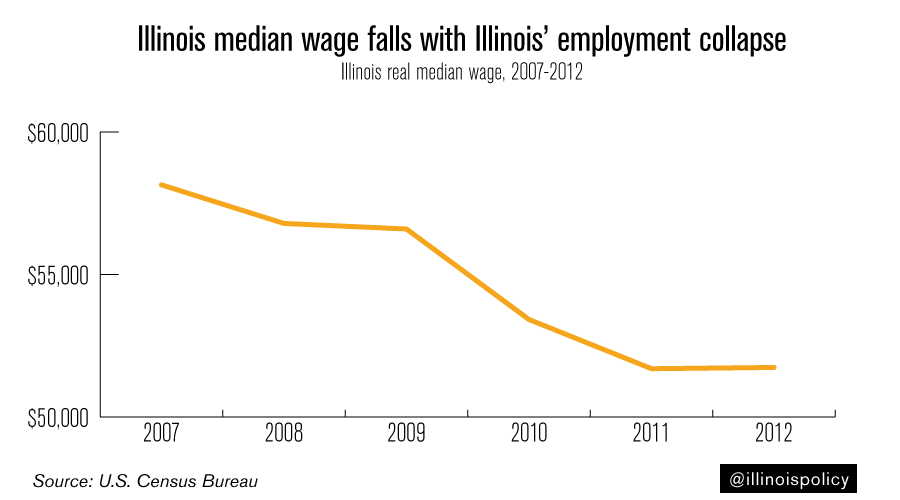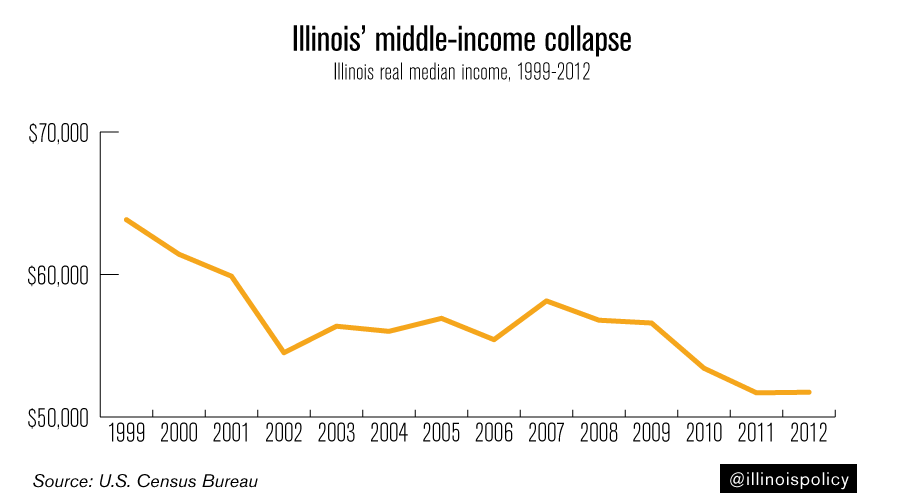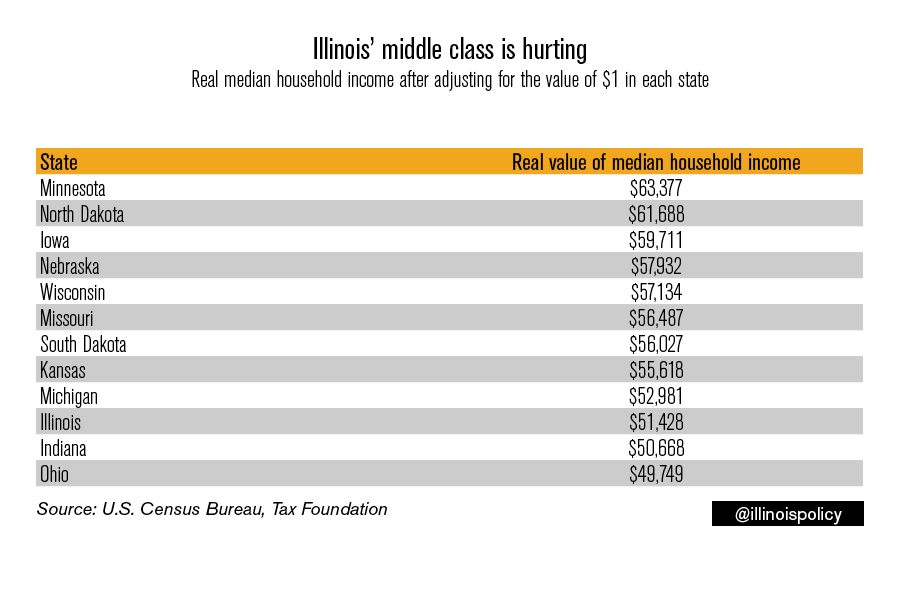Illinois’ median wage has collapsed by $12,000 since 1999
Illinois has long been known as a high-income state, but that‘s changed for many families in the middle. After decades of policy mistakes, the backbone of the state – Illinois’ middle class – has been hollowed out. Throughout Illinois’ history, innovation and high employment led to high incomes, making the Land of Lincoln a wealthy...
Illinois has long been known as a high-income state, but that‘s changed for many families in the middle. After decades of policy mistakes, the backbone of the state – Illinois’ middle class – has been hollowed out.
Throughout Illinois’ history, innovation and high employment led to high incomes, making the Land of Lincoln a wealthy state. In a dynamic economy with healthy employment growth, employers are forced to compete for workers.
Case in point: near the Bakken oil fields in North Dakota, where the jobless rate is below 1 percent, Walmart’s starting wage for a cashier is $17.40 per hour.
Illinois used to be a high-employment state, which kept wages up for the middle class. Now, however, employment growth is not keeping up with population growth, causing wages to fall.
From 2007 to 2012, Illinois’ working-age population increased by 220,000 while the number of people employed in Illinois fell by 370,000. Illinois’ median income dropped $6,500 in the same period.
Expand the time frame, and this picture becomes even grimmer. Illinois’ median wage has collapsed by $12,000 since 1999.
This middle-income collapse coincides with a time when employment growth failed to keep up with population growth. From 1999 to 2012, the number of people employed in Illinois decreased by 215,000, even as the working age population grew by 670,000.
In short, when Illinois’ employment growth doesn’t keep up, middle- and lower-class pocketbooks take a bit hit.
After adjusting for the real value of a dollar in each Midwestern state, Illinois is no longer a high-income state for middle-income earners. In fact, Illinois comes out near the bottom in median household income, after adjusting for cost-of-living.
To help the middle and lower class, Illinois needs more job creation and employment growth. There is no other solution to stop the collapse in middle incomes.
Some basic reforms would help. Middle- and lower-class workers would benefit from alternatives to occupational licensing to make it easier for them to get started in a profession. Illinois also needs a regulatory overhaul to cut startup fees and wait times, along with reform to employer liability costs, which drive jobs out of the state.



